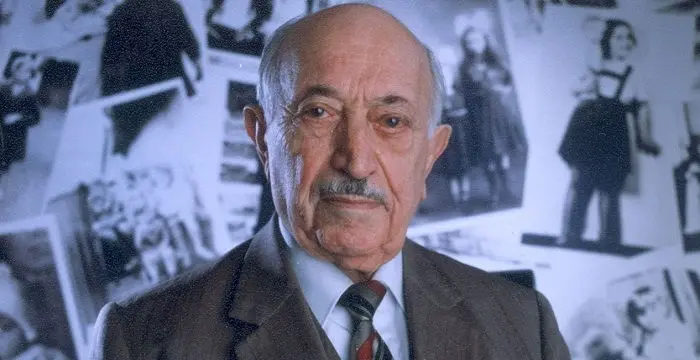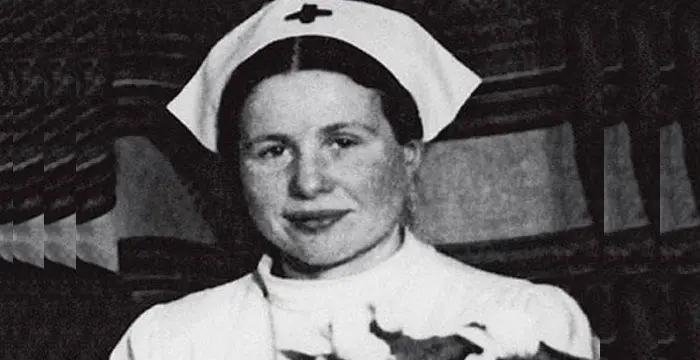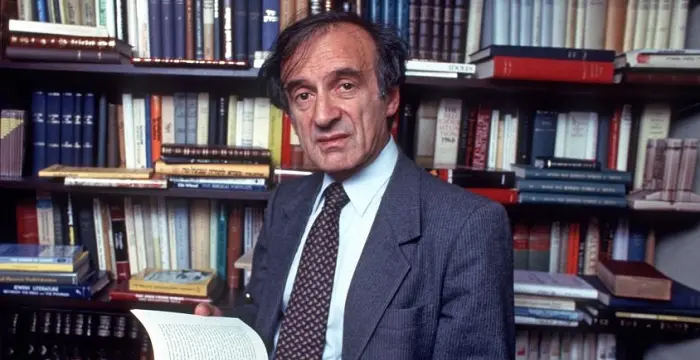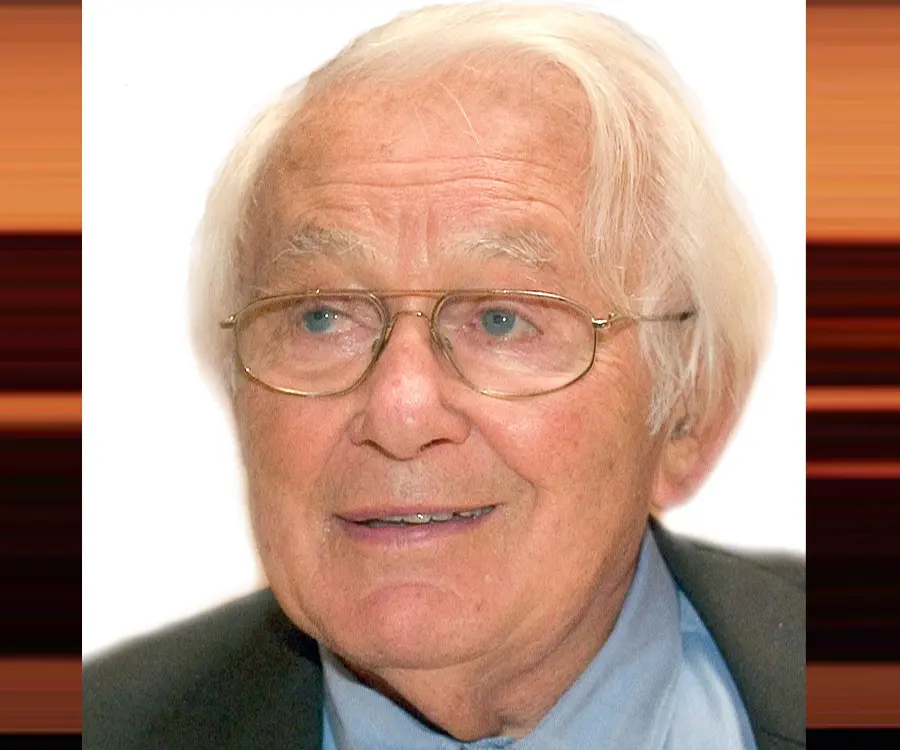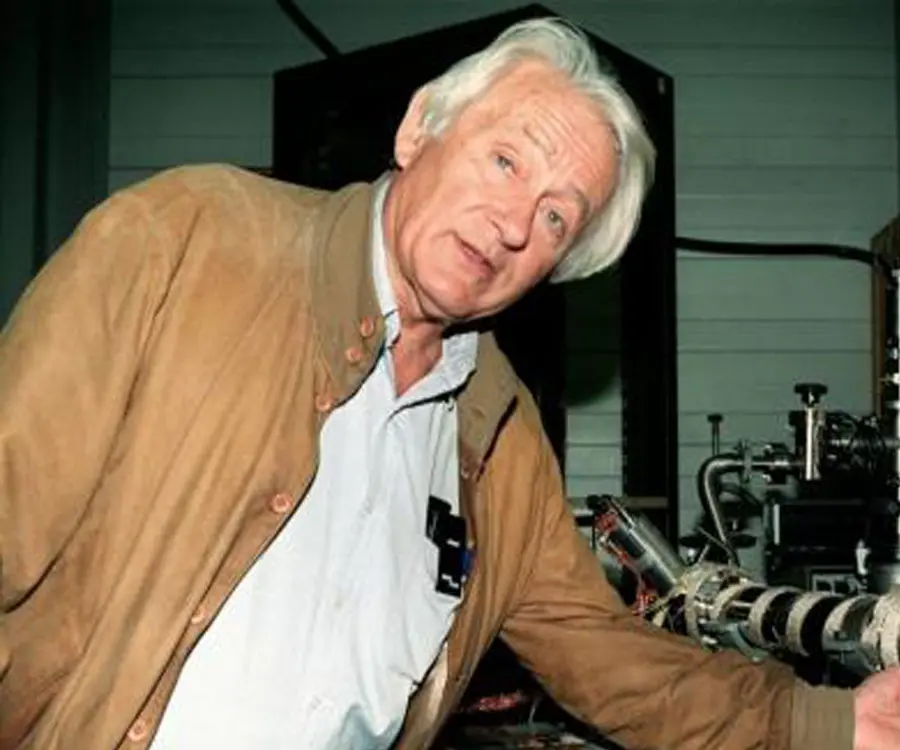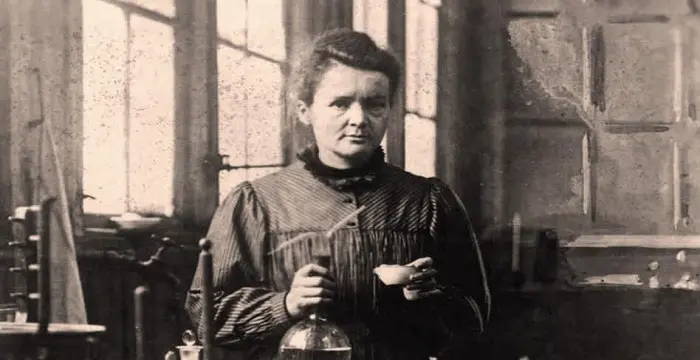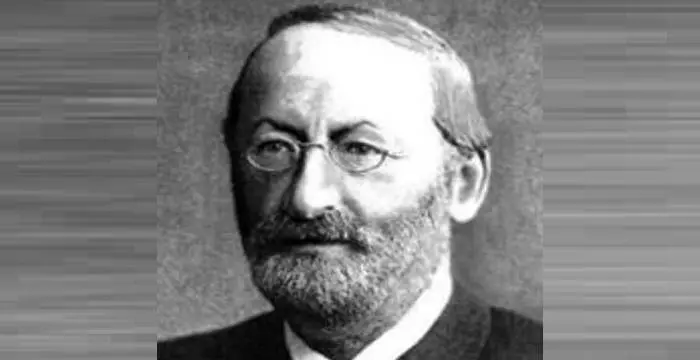
Georges Charpak - Physicists, Life Achievements and Childhood
Georges Charpak's Personal Details
Georges Charpak was a Polish-born French physicist who received the Nobel Prize for inventing the multi-wire proportional chamber
| Information | Detail |
|---|---|
| Birthday | August 1, 1924 |
| Died on | September 29, 2010 |
| Nationality | French, Polish, Ukrainian |
| Famous | Holocaust Survivors, Scientists, Physicists |
| Spouses | Dominique Vidal |
| Siblings | Andre Charpak |
| Known as | Jerzy Charpak |
| Universities |
|
| Birth Place | Dąbrowica, Poland |
| Born Country | Ukraine |
| Gender | Male |
| Father | Maurice Charpak |
| Mother | Anna Charpak |
| Sun Sign | Leo |
| Born in | Dąbrowica, Poland |
| Famous as | Physicist |
| Died at Age | 86 |
// Famous Holocaust Survivors
Simon Wiesenthal
Simon Wiesenthal was an Austrian writer and a famous Nazi hunter. This biography gives detailed information about his childhood, life, works, and timeline.
Irena Sendler
Irena Sendler was a Polish nurse who along with her network is credited to have saved the lives of 2,500 Jewish children during the Holocaust. .
Elie Wiesel
Elie Wiesel is a Jewish Writer who has authored more than fifty books including, the best-known “Night”. To know more about the childhood, life and timeline of Elie Wiesel, read the brief biography and profile of Elie Wiesel.
Georges Charpak's photo
Who is Georges Charpak?
Georges Charpak was a Polish-born French Nobel laureate physicist who came into prominence for his invention of subatomic particle detectors, in particular multi-wire proportional chamber. His invention was revolutionary as it changed the face of high-energy physics. Such was the use of multiwire chambers that by 1990s the detectors were at the heart of almost every experiment in particle physics. His chamber also began to have its application in medicine, biology, and industry. Interestingly, much before he was awarded the Nobel Prize in Physics for his invention, two researchers who used Charpak’s invention for identifying subatomic phenomena, received their Nobel Prize. Apart from making historic scientific discoveries and invention, Charpak held numerous administrative responsibilities in his life. He was the professor-in-residence at École supérieure de physique et de chimie industrielles in Paris and member of the Board of Sponsors of the Bulletin of the Atomic Scientists.
// Famous Physicists
Henry Cavendish
Henry Cavendish was a theoretical chemist and physicist, renowned for discovery of hydrogen and calculation of the mass of earth. To know more about his childhood, profile, timeline and career read on
Walter Kohn
Nobel Laureate Walter Kohn was an Austrian-born American theoretical chemist and physicist. Check out this biography to know about his childhood, life, achievements, works & timeline.
Nikola Tesla
Nikola Tesla was a Serbian-American inventor, best known for his development of alternating current electrical systems. This biography of Nikola Tesla provides detailed information about his childhood, life, achievements, works & timeline.
Childhood & Early Life
Georges Charpak was born Jerzy Charpak on August 1,1924 to Anna and Maurice Charpak in the village of Dabrowica in Poland. His parents belonged to the Jewish community. He had a brother, Andre Charpak who eventually became an actor and film director.
At the age of seven, Charpak’s family shifted base from Poland to Paris. Ten years later in 1941, young Charpak began his formal education at the Lycee Saint Louis, studying mathematics. Thereafter he studied at Lycee de Montpellier.
During World War II, Charpak served in the resistance. In 1943, he was imprisoned by Vichy authorities. The following year, he was deported to the Nazi concentration camp at Dachau, where he remained until 1945.
Liberated from the Nazi camp, Charpak resumed his studies, enrolling at the Ecole des Mines, a prestigious engineering school in France in 1945. Three years later, he graduated from the same, earning the French degree of Civil Engineer of Mines equivalent to Master’s degree.
Following his graduation degree, Charpak became a student of Frederic Joliot-Curie at College de France in 1949. In 1954, he received his PhD in nuclear physics from the College de France. The subject of his thesis was low radiation due to disintegration of nuclei.
Career
While studying for his PhD, Charpak secured a research position for the National Center for Scientific Research (CNRS). He worked there until 1959.
In 1959, Charpak joined the staff of CERN (European Organization for Nuclear Research) in Geneva. It was there that he conducted his life’s most important research and discovery.
A year following his entry at CERN, Charpak participated in the first exact measurement of the magnetic momentum of the muon. The team discovered that muon was not a separate particle of the nucleus but just a heavy electron. Next, he focused on the development of various types of non-photographic scintillating chambers from 1961 to 1967.
In 1968, he invented and developed the multiwire proportional chamber. The chamber was basically an advanced version of old bubble chamber which had become out-dated and archaic. The new chamber allowed for better data processing. Also, it assisted in sensing, evaluating and recording hundreds of millions of particles in a second.
Charpak’s invention of the multiwire proportional chamber was revolutionary in the field of particle physics. Unlike its predecessors such as the cloud chamber or the bubble chamber which recorded the tracks left by particles at the rate of only one or two per second, the multiwire chamber recorded up to one million tracks per second and transmitted the data directly to a computer for analysis. Furthermore, old chambers depended on taking photographs of the tracks left by particles as they emerged from collision but Charpak’s chamber used miniscule wires to capture electric pulse thus generating more information.
Following his discovery of multiwire proportional chamber, Charpak together with Ngoc and Policarpo, jointly invented the scintillation drift chamber during the latter half of the 1970s. Meanwhile in 1974, he introduced spherical drift chambers for studies of proteins by X-ray diffraction.
From 1979 to 1989, Charpak turned his interest to multistage avalanche chambers. He was involved in the introduction of multistage avalanche chambers and application of photon counters for the imaging ionizing radiations.
Towards the end of his career at CERN, Charpak participated in experiments at Fermilab (USA) from 1985 to 1991. He introduced chambers based on luminescent avalanches. He played an important role in the development of instrumentation for biological research using b-ray imaging.
Post being felicitated with the Nobel Prize, Charpak applied the principles of his invention in biology and medicine. It was his research that led to the development of a camera used by NASA to monitor astronauts’ hearts. He further developed an X-ray machine that used one-tenth of the radiation of a conventional X-ray machine. He also worked on ways to reprogram cancerous cells so as to make them less malignant.
Apart from his scientific research, Charpak held several administrative responsibilities. In 1980, he became professor-in-residence at École supérieure de physique et de chimie industrielles in Paris (ESPCI). He held the Joliot-Curie Chair in 1984. At the institute, he successfully developed and demonstrated powerful applications of the particle detectors invented by him.
Charpak was co-founder of a number of start-ups in the biomedical arena, including Molecular Engines Laboratories, Biospace Instruments and SuperSonic Imagine, together with Mathias Fink. He was a member of the Board of Sponsors of the Bulletin of the Atomic Scientists.
Charpak was a very strong advocate of nuclear power in France. He developed a radon detector to help predict earthquakes. Prior to this, he investigated radiation to find subterranean minerals.
Major Work
Charpak’s most important contribution in particle physics came in 1968 when he invented and developed the multi-wire proportional chamber. The chamber was one-of-its-kind then as it was way ahead of its predecessors, cloud chamber or bubble chamber. Unlike its forerunners which recorded the tracks left by particles at the rate of only one or two per second, the multi-wire chamber recorded up to one million tracks per second. Furthermore, it transmitted its data directly to a computer for analysis thus eliminating the process during which scientists scanned thousands of photographs one by one.
Awards & Achievements
In 1985, Charpak was elected to the French Academy of Sciences.
In 1992, Charpak was conferred with the prestigious Nobel Prize in Physics for his invention and development of particle detectors, in particular the multi-wire proportional chamber.
In March, 2001 Charpak received Honorary PhD from University of the Andes, Colombia, Bogotá.
Personal Life & Legacy
Charpak tied the nuptial knot with Dominique Vidal in 1953. The couple was blessed with three children.
Charpak became a naturalized French citizen in 1946.
He breathed his last on September 29, 2010 in Paris, France. He was 86 years of age then.
Trivia
Interestingly, even before Charpak received his Nobel Prize for the invention of particle detectors, two Nobel Prizes were awarded to scientists who used Charpak’s device for identifying subatomic phenomena.
// Famous Scientists
Juliane Koepcke
Juliane Koepcke is a German-Peruvian biologist, who was the lone survivor among the 92 passengers and crew of the ill-fated LANSA Flight 508 that crashed in the Peruvian rainforest on 24 December 1971. Know more about her life in this biography.
Henry Cavendish
Henry Cavendish was a theoretical chemist and physicist, renowned for discovery of hydrogen and calculation of the mass of earth. To know more about his childhood, profile, timeline and career read on
Konstantin Tsiolkovsky
Konstantin Tsiolkovsky was a Russian rocket scientist and a pioneer of astronautics. This biography provides detailed information about his childhood, family, personal life, career, achievements, etc.
Georges Charpak's awards
| Year | Name | Award |
|---|---|---|
Other | ||
| 0 | Nobel Prize in Physics | |
| 0 | 1992 | |
Georges Charpak biography timelines
- // 1st Aug 1924Georges Charpak was born Jerzy Charpak on August 1,1924 to Anna and Maurice Charpak in the village of Dabrowica in Poland. His parents belonged to the Jewish community. He had a brother, Andre Charpak who eventually became an actor and film director.
- // 1941At the age of seven, Charpak’s family shifted base from Poland to Paris. Ten years later in 1941, young Charpak began his formal education at the Lycee Saint Louis, studying mathematics. Thereafter he studied at Lycee de Montpellier.
- // 1943 To 1945During World War II, Charpak served in the resistance. In 1943, he was imprisoned by Vichy authorities. The following year, he was deported to the Nazi concentration camp at Dachau, where he remained until 1945.
- // 1945Liberated from the Nazi camp, Charpak resumed his studies, enrolling at the Ecole des Mines, a prestigious engineering school in France in 1945. Three years later, he graduated from the same, earning the French degree of Civil Engineer of Mines equivalent to Master’s degree.
- // 1946Charpak became a naturalized French citizen in 1946.
- // 1949 To 1954Following his graduation degree, Charpak became a student of Frederic Joliot-Curie at College de France in 1949. In 1954, he received his PhD in nuclear physics from the College de France. The subject of his thesis was low radiation due to disintegration of nuclei.
- // 1953Charpak tied the nuptial knot with Dominique Vidal in 1953. The couple was blessed with three children.
- // 1959While studying for his PhD, Charpak secured a research position for the National Center for Scientific Research (CNRS). He worked there until 1959.
- // 1959In 1959, Charpak joined the staff of CERN (European Organization for Nuclear Research) in Geneva. It was there that he conducted his life’s most important research and discovery.
- // 1961 To 1967A year following his entry at CERN, Charpak participated in the first exact measurement of the magnetic momentum of the muon. The team discovered that muon was not a separate particle of the nucleus but just a heavy electron. Next, he focused on the development of various types of non-photographic scintillating chambers from 1961 to 1967.
- // 1968In 1968, he invented and developed the multiwire proportional chamber. The chamber was basically an advanced version of old bubble chamber which had become out-dated and archaic. The new chamber allowed for better data processing. Also, it assisted in sensing, evaluating and recording hundreds of millions of particles in a second.
- // 1974Following his discovery of multiwire proportional chamber, Charpak together with Ngoc and Policarpo, jointly invented the scintillation drift chamber during the latter half of the 1970s. Meanwhile in 1974, he introduced spherical drift chambers for studies of proteins by X-ray diffraction.
- // 1979 To 1989From 1979 to 1989, Charpak turned his interest to multistage avalanche chambers. He was involved in the introduction of multistage avalanche chambers and application of photon counters for the imaging ionizing radiations.
- // 1980 To 1984Apart from his scientific research, Charpak held several administrative responsibilities. In 1980, he became professor-in-residence at École supérieure de physique et de chimie industrielles in Paris (ESPCI). He held the Joliot-Curie Chair in 1984. At the institute, he successfully developed and demonstrated powerful applications of the particle detectors invented by him.
- // 1985 To 1991Towards the end of his career at CERN, Charpak participated in experiments at Fermilab (USA) from 1985 to 1991. He introduced chambers based on luminescent avalanches. He played an important role in the development of instrumentation for biological research using b-ray imaging.
- // 1985In 1985, Charpak was elected to the French Academy of Sciences.
- // 1992In 1992, Charpak was conferred with the prestigious Nobel Prize in Physics for his invention and development of particle detectors, in particular the multi-wire proportional chamber.
- // 2001In March, 2001 Charpak received Honorary PhD from University of the Andes, Colombia, Bogotá.
- // 29th Sep 2010He breathed his last on September 29, 2010 in Paris, France. He was 86 years of age then.
// Famous Polish peoples
Thomas Nicholas Kuc
All about Brazilian-American TV actor, amateur athlete and social media personality including his age, birthday, net worth, girlfriends and some fun facts.
Marie Curie
Marie Curie was a Physicist and Chemist, who was world renowned for her work on radioactivity. She also was the winner of two Nobel Prize. Read this biography to get info about her life and profile.
Irena Sendler
Irena Sendler was a Polish nurse who along with her network is credited to have saved the lives of 2,500 Jewish children during the Holocaust. .
Wernher Von Braun
Wernher von Braun was a rocket scientist and aerospace engineer, who played a major role in rocket science during and post-WWII. Explore this biography to learn more about his profile, childhood, life and timeline.
Furious Pete
Peter Czerwinski, better known as ‘Furious Pete,’ is a professional competitive eater, “YouTuber,” and bodybuilder from Canada.
Ferdinand Cohn
Ferdinand Cohn was a German biologist who is considered as the father of bacteriology and microbiology. Check out this biography to know about his childhood, life, achievements, works & timeline.
Georges Charpak's FAQ
What is Georges Charpak birthday?
Georges Charpak was born at 1924-08-01
When was Georges Charpak died?
Georges Charpak was died at 2010-09-29
Where was Georges Charpak died?
Georges Charpak was died in Paris, France
Which age was Georges Charpak died?
Georges Charpak was died at age 86
Where is Georges Charpak's birth place?
Georges Charpak was born in Dąbrowica, Poland
What is Georges Charpak nationalities?
Georges Charpak's nationalities is French, Polish, Ukrainian
Who is Georges Charpak spouses?
Georges Charpak's spouses is Dominique Vidal
Who is Georges Charpak siblings?
Georges Charpak's siblings is Andre Charpak
What was Georges Charpak universities?
Georges Charpak studied at École des Mines
Who is Georges Charpak's father?
Georges Charpak's father is Maurice Charpak
Who is Georges Charpak's mother?
Georges Charpak's mother is Anna Charpak
What is Georges Charpak's sun sign?
Georges Charpak is Leo
How famous is Georges Charpak?
Georges Charpak is famouse as Physicist
